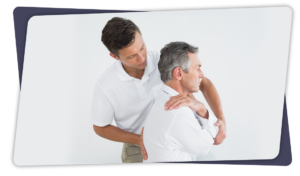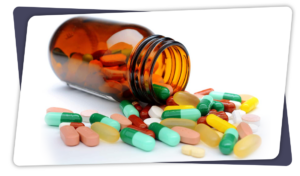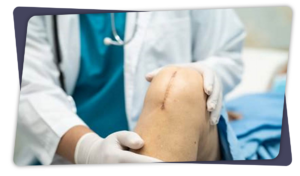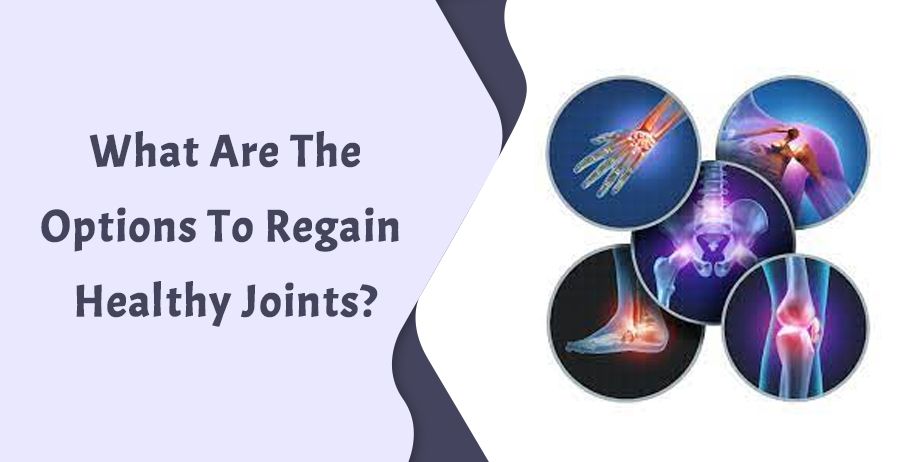Table of Contents
Overview:
If joint pain from arthritis or past injuries makes daily life a struggle, you deserve real relief solutions.
Rather than just masking discomfort with pain pills, prioritizing joint health through lifestyle adjustments, physical therapy, alternative treatments, and nutrition provides lasting gains.
Let’s explore conventional and complementary options to renew mobility, reverse damage, and support your body’s natural healing capacity.
Follow the options to regain healthy joints:
Weight Loss

Excess weight strains joints, especially weight-bearing hips and knees, must carry more pounds with every step.
A 10-pound reduction eases 40 pounds of pressure off the neck to curb pain. Losing extra fat also lowers inflammatory proteins that erode cartilage.
Work with a trainer or registered dietitian to safely trim pounds through calorie-controlled meal plans and regular activity suited to your current fitness level.
Aquatic and low-impact exercise prevents added joint trauma during weight loss. Losing as little as 5% of your body weight reduces arthritis pain drastically for most people.
Physical Therapy

Physical therapists personalize care plans to improve mobility, strength, balance, and coordination by targeting affected areas.
Gentle range of motion exercises, massage, stretching, heat/cold therapies, and teaching proper body mechanics protect joints from further damage.
Home exercise programs continue gains made in supervised clinical sessions. Consistency with follow-up PT provides lasting functionality improvements and may help avoid surgery.
Regular exercise can also help reduce pain and inflammation. Physical therapy can also help improve balance and coordination and reduce the risk of falls.
You can live a more comfortable and active lifestyle with Pain O Soma 500mg, providing powerful and targeted joint pain relief.
Medications

Standard treatment begins with acetaminophen or NSAIDs to relieve swelling and mild arthritis discomfort short term.
Topical menthol-based analgesics offer surface-level relief, too.
For moderate-severe osteoarthritis or rheumatoid arthritis, disease-modifying anti-rheumatic medicine like hydroxychloroquine and sulfasalazine treat underlying autoimmune issues.
Powerful biological medications also inhibit proteins, causing cartilage breakdown.
Alternative medicine, such as physical therapy, may also be prescribed to reduce pain and swelling. Surgery may be recommended as a last resort when other treatments have failed.
Braces and Supports

Knee, ankle, or wrist braces stabilize movement and absorb shocks through compression and improved alignment.
Neoprene sleeves keep joints insulated while housing metal or plastic supports enables continued activity despite LIGament strains, tears, tendinitis, or arthritis.
Consult an orthopedist or occupational therapist to ensure appropriate brace selection and fitting.
Braces can help reduce pain and inflammation and provide support and stability during movements.
They are accommodating for those who suffer from chronic conditions such as arthritis and those recovering from an injury.
Nutritional Supplements

Certain nutritional supplements deliver raw materials joints need for maintaining and repairing cartilage.
Glucosamine, chondroitin, hyaluronic acid, collagen, and omega fatty acids aim to prevent deterioration and ease discomfort by reducing inflammation and rebuilding connective tissues.
Anti-inflammatory plant compounds in turmeric and curcumin fight swelling and deterioration, too.
Ask your doctor which joint supporting nutrients align with your health profile and diagnosis for incorporating whole-food healthy diet improvements or high-quality supplements. Regular exercise and physical therapy can also help improve joint health.
Additionally, maintaining a healthy weight can help reduce the strain on joints. Pain O Soma 350mg provides gentle yet effective relief from mild to moderate muscle soreness.
Physical Activity

While high-impact sports risk joint trauma, low-impact activities offer immense anti-inflammatory benefits to improve pain.
Exercises take pressure off joints, enabling gentle resistance training. Regular walking, cycling, stretching, and yoga build strength and flexibility without pounding.
Exercise also reduces inflammatory proteins and boosts lubricating synovial fluid production to nourish joint spaces. Focus on gradual gains through non-jarring movements in moderation.
Exercise also helps to increase the range of motion, which can help to reduce the risk of injury. Regular exercise can also help reduce stress and anxiety, which can have a positive impact on joint pain.
Lifestyle Factors

Good sleep gives joints essential recovery time and reduces body-wide inflammation linked to arthritis flares.
Stress management also lessens inflammatory chemical production, so it makes relaxation a priority. Smoking constricts blood vessels, slowing nutrient delivery to joint tissues.
Kicking the habit supports healthier cartilage. Listen to your body and avoid repetitive motions that aggravate areas, politely asking for a break.
Pace activities intermittently, resting painful wrists, knees, or fingers to minimize overuse strain.
Exercise regularly to strengthen muscles and joints and to reduce stiffness and swelling. Take regular breaks from activities to reduce fatigue.
Alternative Therapies

Though clinical proof regarding certain alternative modalities is limited, many patients report satisfactory pain relief and improved mobility.
Spinal manipulation from chiropractors, osteopaths, or physical therapists loosens stiffness and realigns mechanics, favoring worn joints.
Acupuncture also activates natural pain-killing endorphins and redirects inflammatory pathways.
Therapeutic ultrasound, TENS devices, and laser light therapy reduce localized swelling and tenderness, delivering quick comfort when other methods fail. Consult practitioners certified in these specialty techniques.
Massage therapy is also beneficial in reducing pain and tension. The exercise can also improve a person’s range of motion and flexibility.
Surgery

If conservative treatment options fail to provide adequate pain relief and functionality after 3 to 6 months, surgical procedures aim to stabilize or repair severely damaged joints.
Arthroscopic surgery removes torn cartilage or bone fragments while smoothing the remaining surfaces.
Partial knee replacement substitutes only the most diseased compartment. Full knee or hip replacement implants prosthetic components when joints deteriorate beyond salvage.
Recovery from surgery demands extensive post-surgical physical therapy plus lifestyle modifications to prevent repeat wear.
✍Conclusion
Renewing comfort and mobility within damaged joints often requires a multipronged effort addressing mechanical dysfunction, inflammation, and instability.
Work with your care team. I am leveraging a combination of proven approaches, including exercise, braces, medication, injections, alternative therapies, and surgery if warranted.
Committing to joint health through proactive self-management helps reclaim lasting functionality and improves your quality of life.
Regular visits with your care team to monitor your progress and adjust your treatment plan as needed are essential to achieving optimal joint health.





